The top 8 questions about local lakes that might surprise you
During our Ecotours on Winona, Wawasee, Tippecanoe and Chapman lakes this summer, many excellent questions were asked. Here are the top eight!
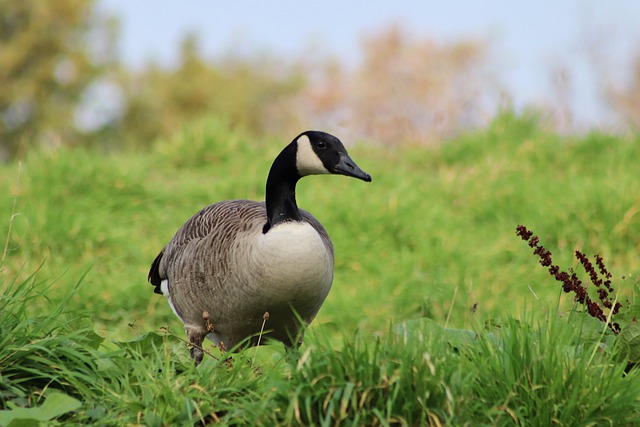
1. Are ducks and geese an important part of a healthy lake ecosystem?
Yes … and no!
Mallard ducks are common, native, and a valuable part of local ecosystems. They eat plants, insects and small crustaceans, anything from earthworms to aquatic plants. Mallard ducks are also the most heavily hunted ducks in North America, which helps keep their population in check.
Geese, on the other hand, can be considered a nuisance. They are meant to migrate from north to south each year, following the warmth. In our region, however, the Indiana DNR has noticed that many geese may be deciding stay year-round. Open spaces that are free from vegetation that could hide predators (such as lawns, golf courses and parks) appeal to them.
No matter how cute or persistent they are, don’t feed ducks or geese. They can forage for themselves!
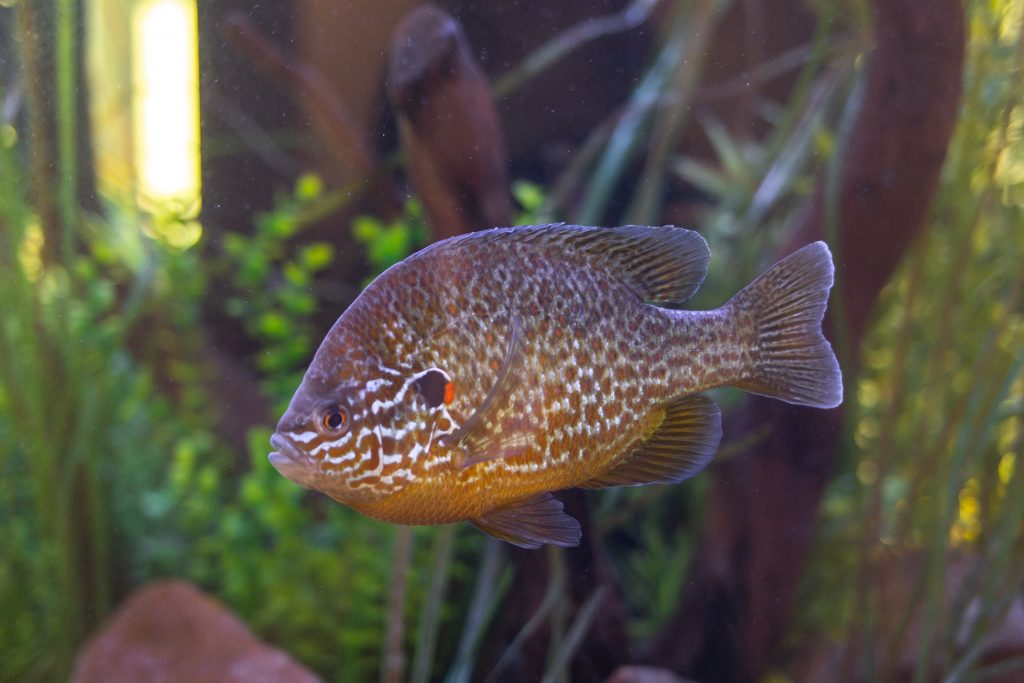
2. Why do lakes differ so much in dissolved oxygen?
Dissolved oxygen is consumed by bacteria, fish and other organisms at the bottom of a lake as dead plant material accumulates. Depending on the lake, there may be more organisms slowly consuming the available dissolved oxygen.
This impacts a lake’ ecosystem in two ways. First, the more material that accumulates and starts decomposing at the bottom of a lake, the faster it fills in, taking up space that used to be available for fish. Second, less dissolved oxygen overall means many aquatic animals won’t have the oxygen they need to thrive.
By reducing the amount of material decomposing at the bottom of a lake (no matter which lake we visit), we can hopefully slow that use of oxygen and make more room in the lake for fish to inhabit in the summer.
One easy way to help is to keep yard waste out of the lake! It sinks to the bottom and decomposes, adding to the amount of sediment that already exists.
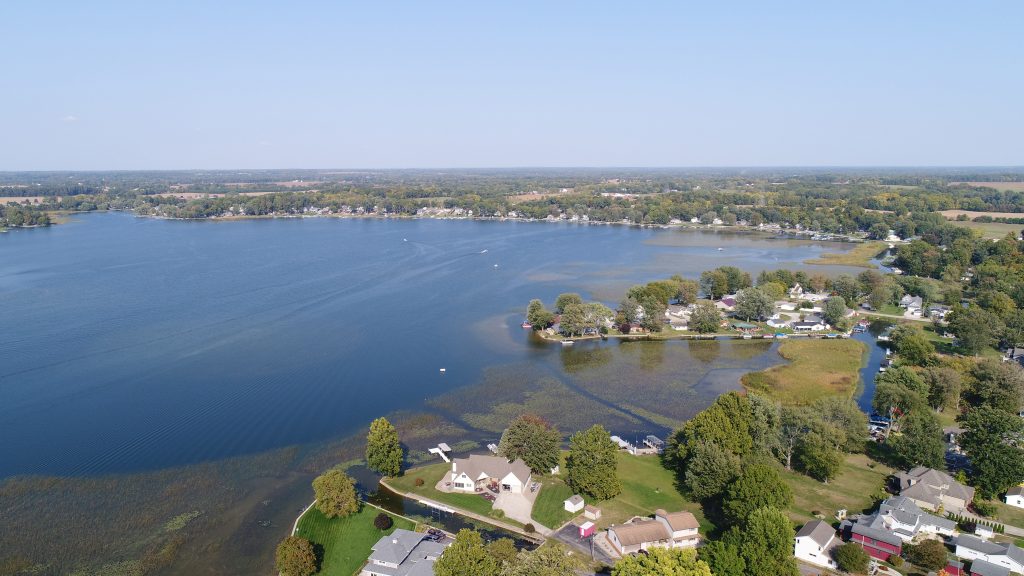
3. Why is the lake green?
Most likely, your lake looks green because algae are suspended in the water. Depending on the type of algae present, the water can even appear pink.
- Green water is usually the result of algae, either an active or decomposing bloom. During the summer, the lake can appear a murky shade of green-brown as boats repeatedly stir particles into the water column.
- Suspended calcium carbonate particles (found in limestone and shells, among other things), cause lakes to appear turquoise on a sunny summer day.
- The tea color seen in many streams and some lakes comes from organic materials, such as decomposing plants or tannins from tree roots.
At the other end of the spectrum, water with very few particles in it appears blue when the water is deep and clear when the water is shallow. Blue light penetrates deep into water and is scattered and reflected back to our eyes; this phenomenon makes water in a deep lake appear blue.
A clear lake isn’t necessarily a clean lake, though. Watch for algae blooms, bad smells and dead aquatic plants and animals to help you determine if the water is safe for recreation.
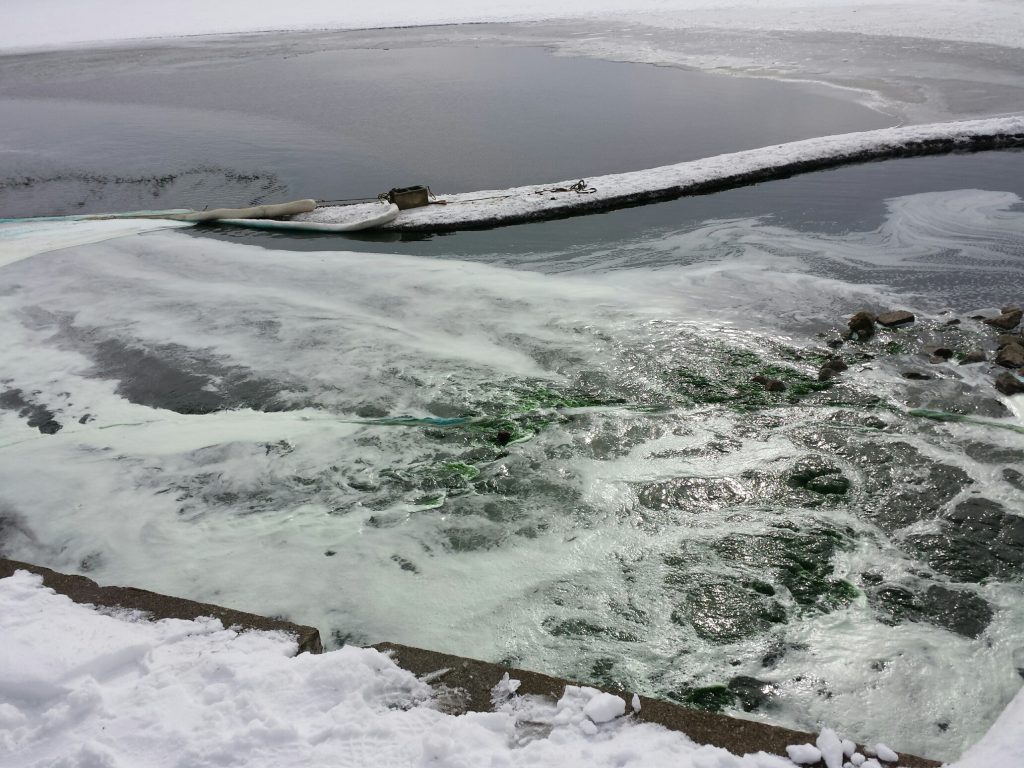
4. What is the white foam that appears occasionally on the lake?
White foam can be natural or unnatural.
Often, foam is produced by dead or dying plants and algae. When they decompose, these organisms release oils that float to the surface and are frothed by wind or waves. The foam can look tan or brown, which means it’s likely been stained by tannins.
In other cases, the foam is the result of nearby homes or production facilities. For instance, if the foam seems suspiciously soapy, it’s probably detergent!
Here’s a simple way to tell if the foam is natural or a kind of pollution: Carefully collect some of the foamy water in a jar. Shake the jar. Detergents will produce more bubbles; natural foam usually dissipates. Detergent foams feel slippery and usually smell of perfumes. Natural foams often smell like fish or soil.
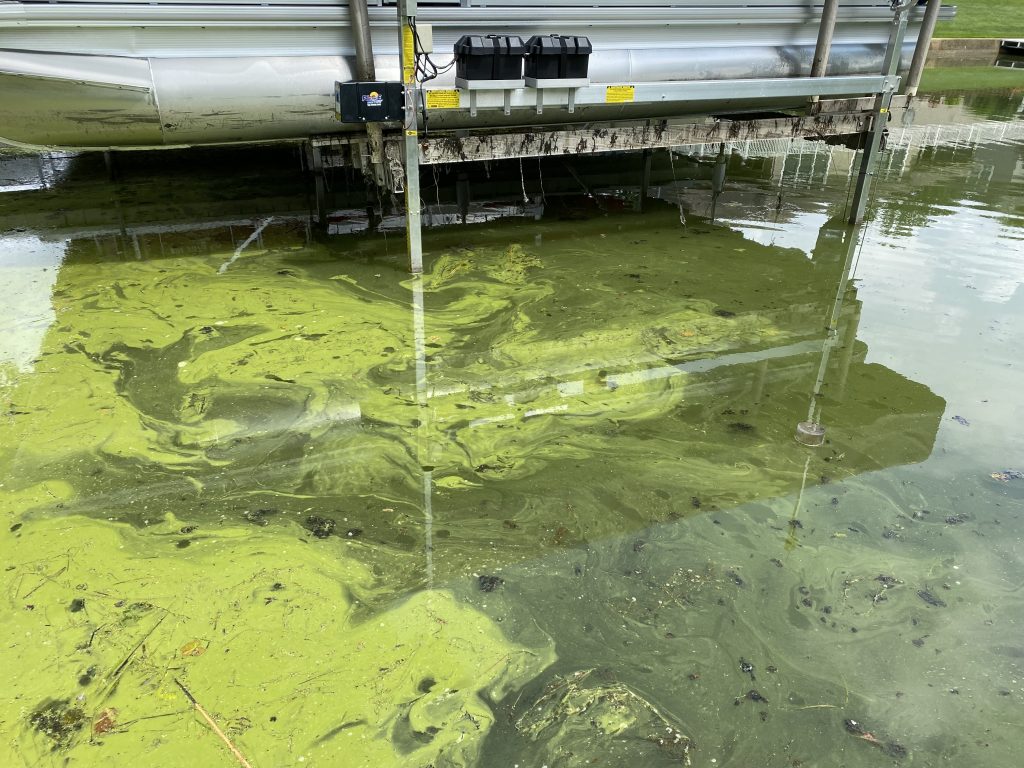
5. Does blue-green algae hurt people, or just dogs?
Microcystin (the toxin produced by blue-green algae) can harm both people and animals, depending on how much of the toxin they ingest. For humans, that level is 8.0 ppb. For pets, it’s much lower: 0.8 ppb. (“Ppb” stands for parts per billion, making 1 ppb equivalent to about one grain of sand in a sandbox.)
Dogs tend to get sick from microcystin more easily than people because they may ingest a large amount while they swim and then afterward, as they lick their fur. If too much microcystin is ingested by dogs or humans, illness can follow, including stomach and intestinal discomfort, rashes and liver problems. Accidentally ingesting lower amounts of microcystin is not life-threatening, but it could still cause sickness.
When in doubt, stay away from water that has a visible bloom or that you know has a high level of microcystin.
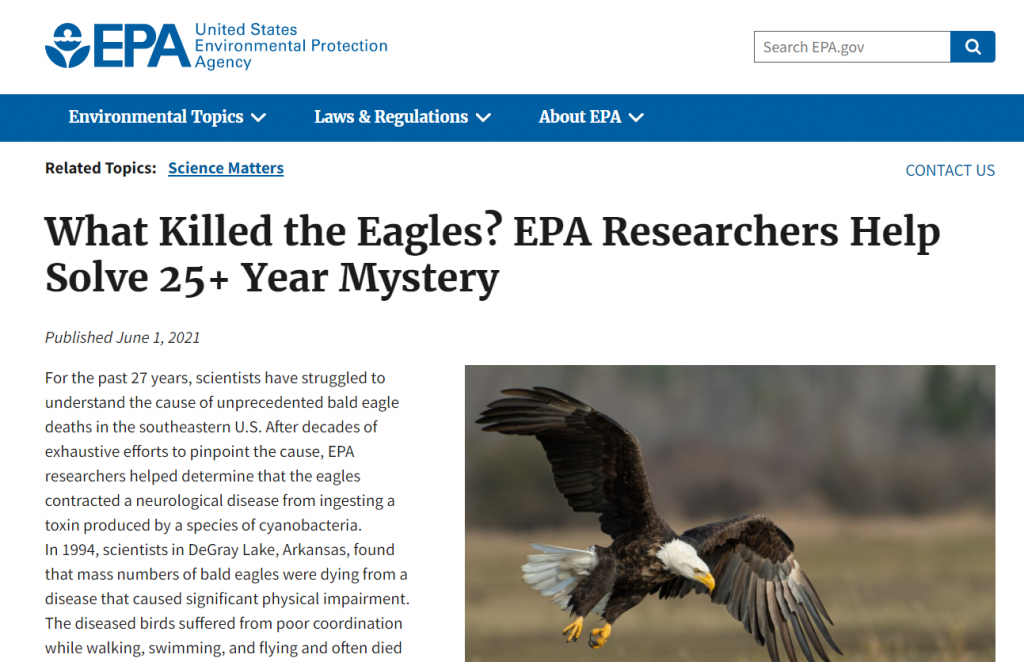
6. How are eagles affected by blue-green algae?
For more than 25 years, scientists have been trying to find out why bald eagles in the southeastern United States were dying in large numbers. Their answer has implications for our own lakes and eagle populations!
Aquatic weeds are sometimes treated with herbicide that contains bromine, a chemical element that builds up in the weeds. When blue-green algae grows on the aquatic weeds, the algae and any associated toxins are eaten by smaller waterfowl, such as American coots, who are going after the weeds. Eagles then swoop down to hunt and eat the coots. As the toxins begin to accumulate in their systems, they can cause a harmful brain disease.
The Environmental Protection Agency (EPA) has launched a project to further study these bird deaths and the toxin that causes them. They’ve asked the Lilly Center to help by collecting specific weeds from local lakes and by sending in samples for testing. We plan to follow their guidelines!
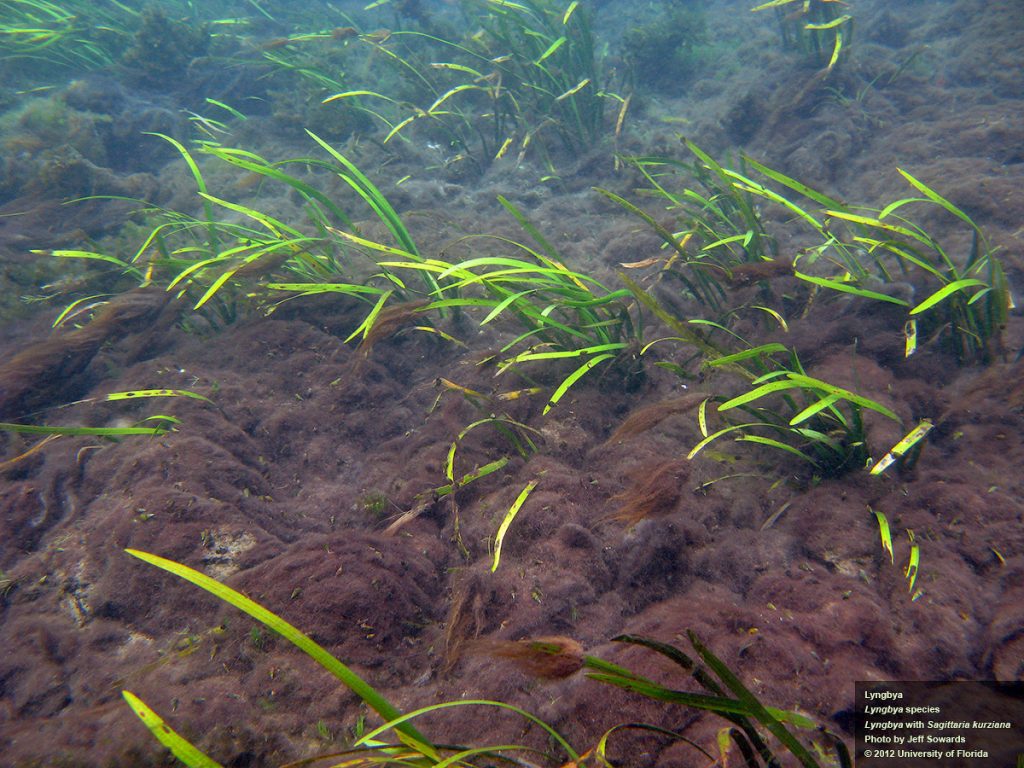
7. What is the plant that looks like green hair, just below the surface?
There are a couple potential answers to this question: eelgrass and lyngbya.
Eelgrass isn’t a picky aquatic plant: it will grow in fresh or brackish, slow- or fast-moving water. It grows by sending out underground runners to form underwater “meadows.” The grass can be several feet tall, reaching the surface of the water. Each strand is about an inch wide, dark green, with pronounced veins and rounded tips.
Lyngbya is a type of freshwater algae. It forms long, strong filaments that create mats on the surface or the bottom of lakes and ponds. The mats are often several inches thick and smell unpleasant if removed from the water. Sometimes they’re described as “dreadlocks,” due to their tangled appearance. They spread much the same way as other aquatic species: by hitching a ride on boats that aren’t properly cleaned before being put into a new body of water.
Always talk to aquatic weed control experts before spraying for aquatic plants! Herbicide must be applied in the right amounts to be effective.
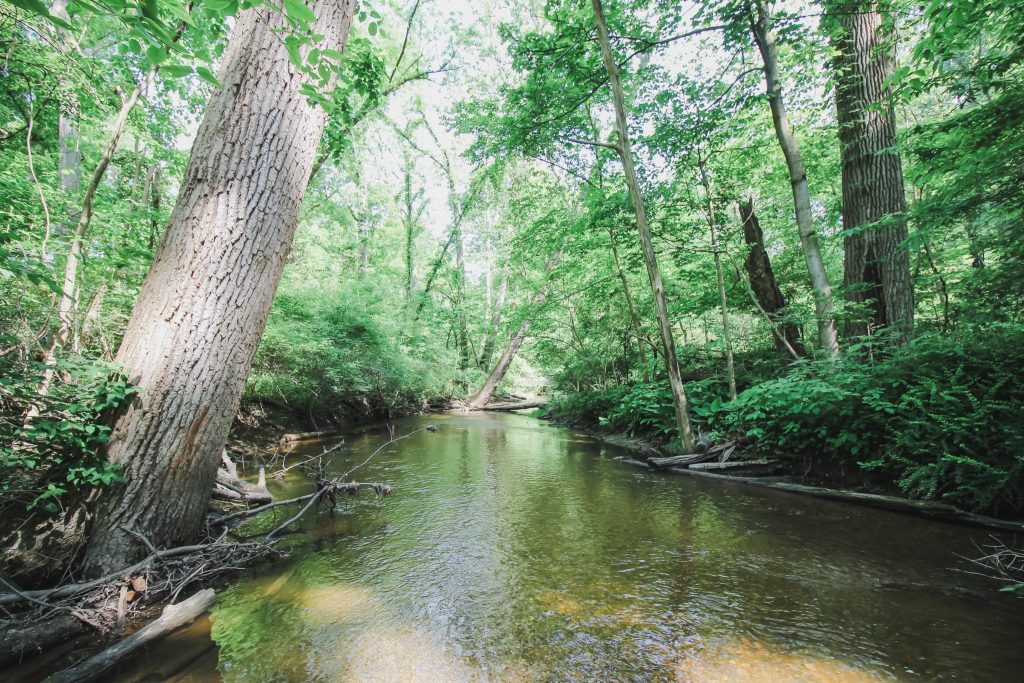
8. How does water reach streams?
Streams (and lakes) are recipients of water from their watersheds.
A watershed is an area of land that collects runoff (from rain, sprinklers, snowmelt, flooding, etc.) and drains it to streams and rivers, which all flow to a larger body of water such as a lake. If you live on a shoreline, the process is accelerated. Water from your property will likely flow directly into the lake.
Often, streams feed into one another. Water in a local woodland creek is probably flowing from another source upstream, gathering into larger and larger streams until it empties into a river or lake.
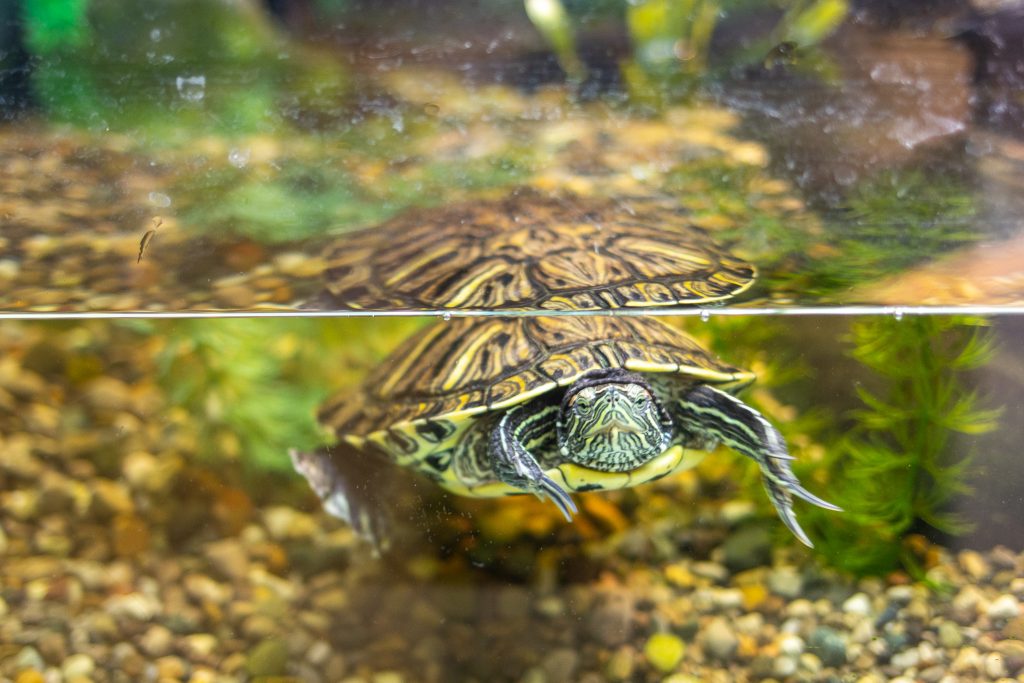
Bonus question: How long can turtles breathe under water?
Most native turtles can hold their breath for 20-30 minutes, but in the right conditions, they can hold it for months! During hibernation, a turtle’s heartbeat slows from 40-45 beats per minute to just 10 beats per minute. They can survive an entire winter under the ice.
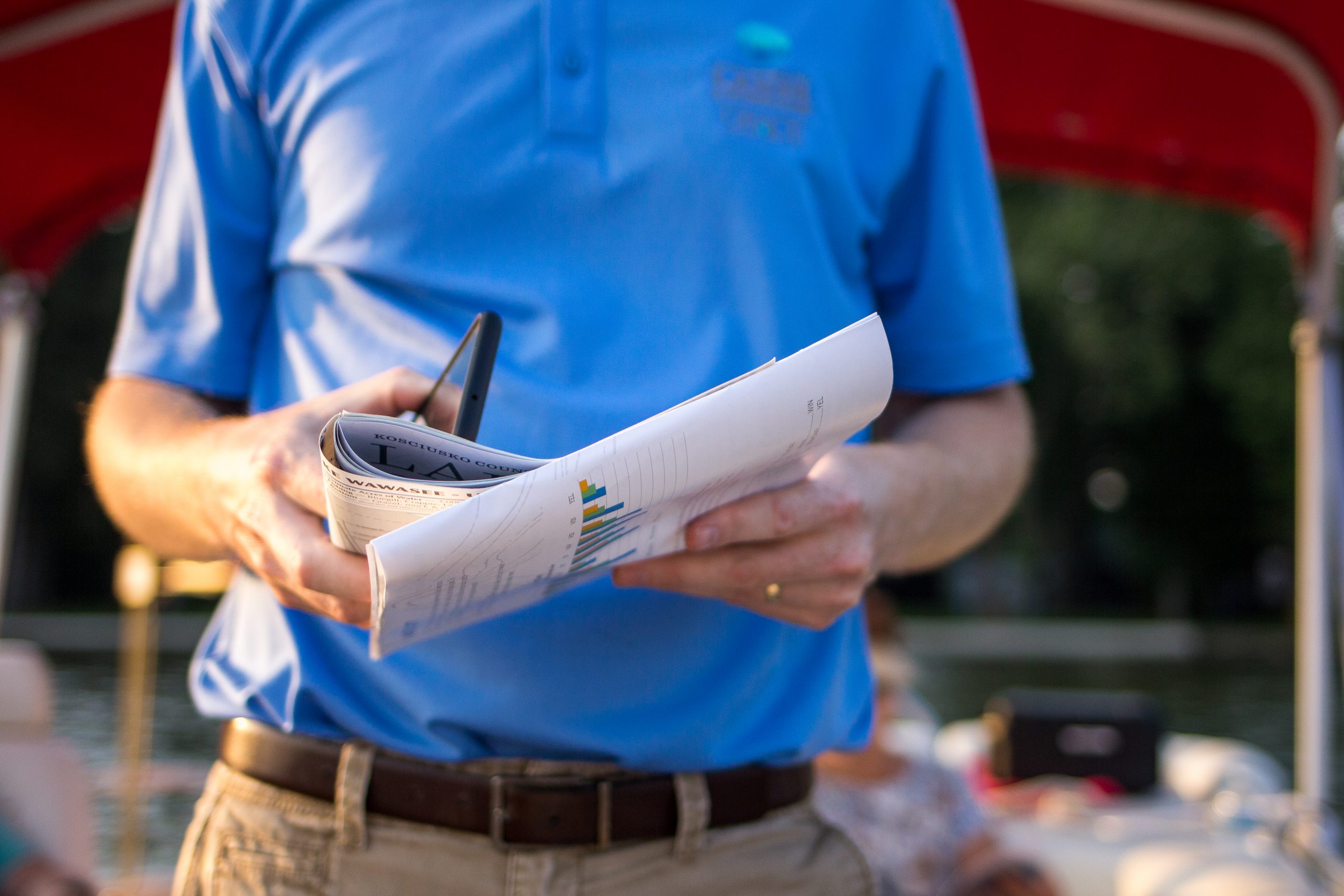
Top 10 from 2020
Last year’s Ecotours were just as enlightening as this year’s! Have a burning question but don’t see it here? Try this Top 10 post, instead.